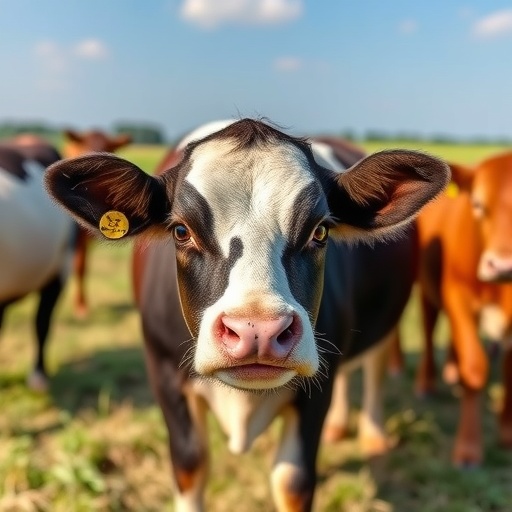In a striking development for the American agricultural sector, net farm income is projected to escalate dramatically to $177 billion in 2025, marking a significant surge from the $128 billion forecasted for 2024. This notable upward revision emerges from the recent update of the annual U.S. farm income and consumer food price outlook published by the Food and Agricultural Policy Research Institute (FAPRI) housed within the University of Missouri’s College of Agriculture, Food and Natural Resources. The projection encapsulates a complex interplay of market forces, government interventions, and evolving production landscapes, underscoring both the resilience and vulnerability of U.S. farming economies.
The unprecedented rise in income for 2025 chiefly derives from record-setting cattle prices combined with substantial one-time government payments. These extraordinary factors have created a temporary uplift that analysts warn will not sustain beyond the near term. While cattle sectors enjoy unprecedented demand and tight supply conditions, enhancing farm revenue streams, crops tell a different story — marked by falling prices, especially for staple commodities like corn and wheat. This dichotomy elucidates the structural challenges within agricultural markets as producers grapple with shifting global supply-demand dynamics.
Pat Westhoff, director of FAPRI, emphasizes the transient nature of the income surge, highlighting that the current optimism is underpinned by emergency governmental support and favorable livestock market conditions, which are expected to wane. As these emergency payments phase out and crop prices endure downward pressures, forecasts indicate a steep decline—potentially a $31 billion drop in farm income—for 2026. This forecasted volatility illustrates the delicate balance farmers must maintain amid fluctuating economic policies and environmental uncertainties.
The report integrates the most current data available as of August 2025, including comprehensive United States Department of Agriculture (USDA) crop production estimates and projections from S&P Global’s economic outlook. This fusion of data sets provides a robust analytical framework for examining agricultural profitability under the influence of recent legislative reforms. Of particular significance is the One Big Beautiful Bill Act, passed in July, which introduced pivotal amendments to farm support programs and biofuel-related tax credits, influencing both crop and bioenergy markets.
Corn prices have experienced a significant downturn primarily due to record-setting production volumes across the nation. For the 2025-26 marketing year, spanning September to August, the average corn price is anticipated to hover around $4.05 per bushel. This figure sits marginally above USDA’s estimates but remains notably depressed compared to historical averages. The volume glut is anticipated to suppress prices in the short term, with a tentative, modest price recovery projected for the 2026-27 cycle as demand potentially aligns more closely with supply adjustments.
Conversely, soybean markets reflect a more optimistic stance. Soybean prices are expected to increase slightly to an average of $10.16 per bushel in the 2025-26 marketing year. This uptick is largely attributed to reduced acreage nationwide alongside strengthening biofuel demand, which intensifies competition for available supplies. Given the expanding role of renewable energy policies and the biofuel sector’s ubiquitous influence, soybeans are positioned to benefit from sustained demand that could drive further price appreciation in subsequent years.
Other major crops, however, are not sharing in this positive momentum. Wheat, rice, sorghum, and barley markets face continued price suppression resulting from abundant global inventories. These oversupplies reflect both domestic production levels and international competitive pressures. Cotton stands as a notable outlier in this assemblage, buoyed by a notably smaller crop forecast, which supports prices around 66.5 cents per pound. This divergence highlights the heterogeneous nature of commodity markets and the sensitivity to production variance and global trade patterns.
In the livestock domain, cattle prices have reached unprecedented heights, reflecting constrained supply chains coupled with robust domestic consumption. Elevated demand, both from consumer preferences and institutional buying, has pushed prices even higher heading into 2026. Projections suggest that while the near-term outlook remains bullish, eventual production increases will temper price inflation, aligning supply with market needs over time.
Dairy production trends reveal a resurgence in both cow populations and yield efficiencies, contributing to higher output levels. Nevertheless, the resultant supply increase has exerted downward pressure on key dairy prices, particularly impacting cheese and butter segments. Export markets are anticipated to play a crucial role in absorbing excess production, offsetting domestic price softness and stabilizing income for dairy farmers in the face of evolving global demand conditions.
In food price inflation, a rebound is forecasted for 2025, with an aggregate rate of 2.9 percent. This inflation is predominantly driven by rising beef prices, projected to escalate over 10 percent for the year. While food-at-home inflation may moderate in 2026, challenges persist within the foodservice sector, where costs at restaurants continue an upward trajectory. These inflationary trends hold critical implications for consumers, retailers, and supply chain actors alike, framing concerns around affordability and access in the broader food system.
This snapshot of agricultural economic conditions—based on current policy settings and market expectations—serves as a pivotal benchmark for stakeholders. Westhoff underscores the inherent uncertainty embedded within such forecasts, which are susceptible to disruption from unforeseen economic shifts, weather anomalies, or policy changes. The dynamic nature of these factors necessitates continual monitoring and adaptive strategies among producers, policymakers, and industry participants.
The comprehensive report stands as part of FAPRI’s sustained commitment to delivering rigorous, data-driven economic analyses aimed at informing policy debates, guiding industry decision-making, and enhancing public understanding of agricultural market realities. By illuminating the multifaceted variables influencing farm income and food prices, this assessment provides critical insights into the evolving landscape of U.S. agriculture as it navigates volatility, innovation, and regulatory transformation.
As the agricultural sector moves forward, the transient boon in 2025 serves as both an opportunity and a cautionary tale. Stakeholders are urged to anticipate the forthcoming challenges signaled in the 2026 projections, underscoring the necessity for resilient and diversified approaches to sustain farm profitability and food system stability amid an unpredictable economic environment.
Subject of Research:
Article Title:
News Publication Date:
Web References: https://fapri.missouri.edu/publications/2025-baseline-update/
References:
Image Credits: University of Missouri
Keywords: Economics, Human geography




